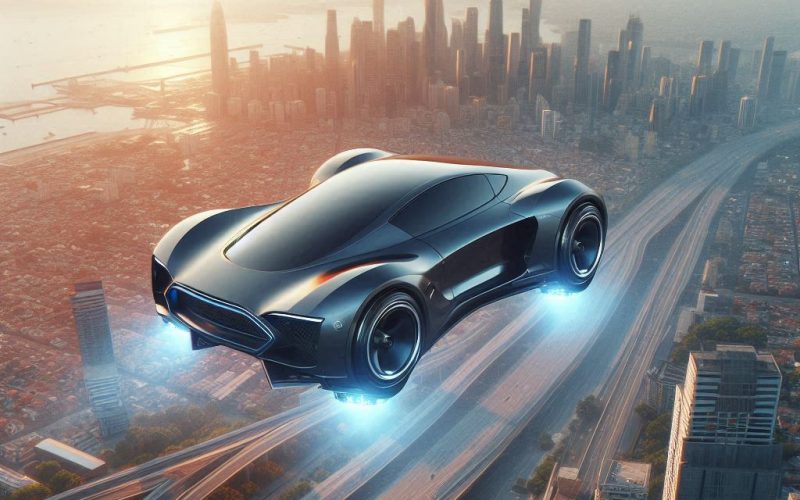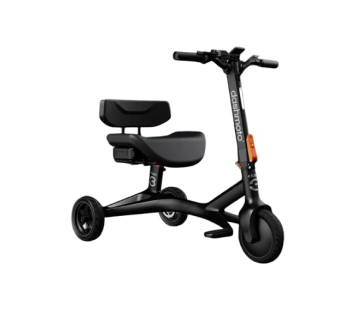The launch of flying cars into the skies is not far off. Many companies have begun manufacturing flying cars that will hit the market very soon. These flying vehicles are excellent solutions for mitigating traffic congestion and are the new, 21st-century transportation modes we’ve all been waiting for.
The price range of flying cars extends everywhere from $120,000 to over $1 million. I have handpicked the 5 cheapest flying cars set to be released in the near future. The prices of these cheapest flying cars range from $120,000 to $300,000, including models that will be available to the public in the coming year.
In this article, we will be exploring the prices of the cheapest flying cars and their features, as well as the future of affordable flying cars. So, without further ado, let’s dive in!
Table of Contents
Our List of the Cheapest Flying Cars
Helix Pivotal
Specifications:
- Cruise speed: 63 mph
- Piloting: 1 pilot
- Maximum climb rate: 500 fpm
- Maximum descent rate: 500 fpm
- Weight: 348 lb (158 kg)
- Payload weight: 220 lb (100 kg)
- Noise: 72 dBa at 150 ft (46 m).
With a price of only $190,000, the Helix model is one of the greatest and cheapest 1-pilot flying cars that will help you avoid traffic jams and enjoy the view of your town or city from the air.
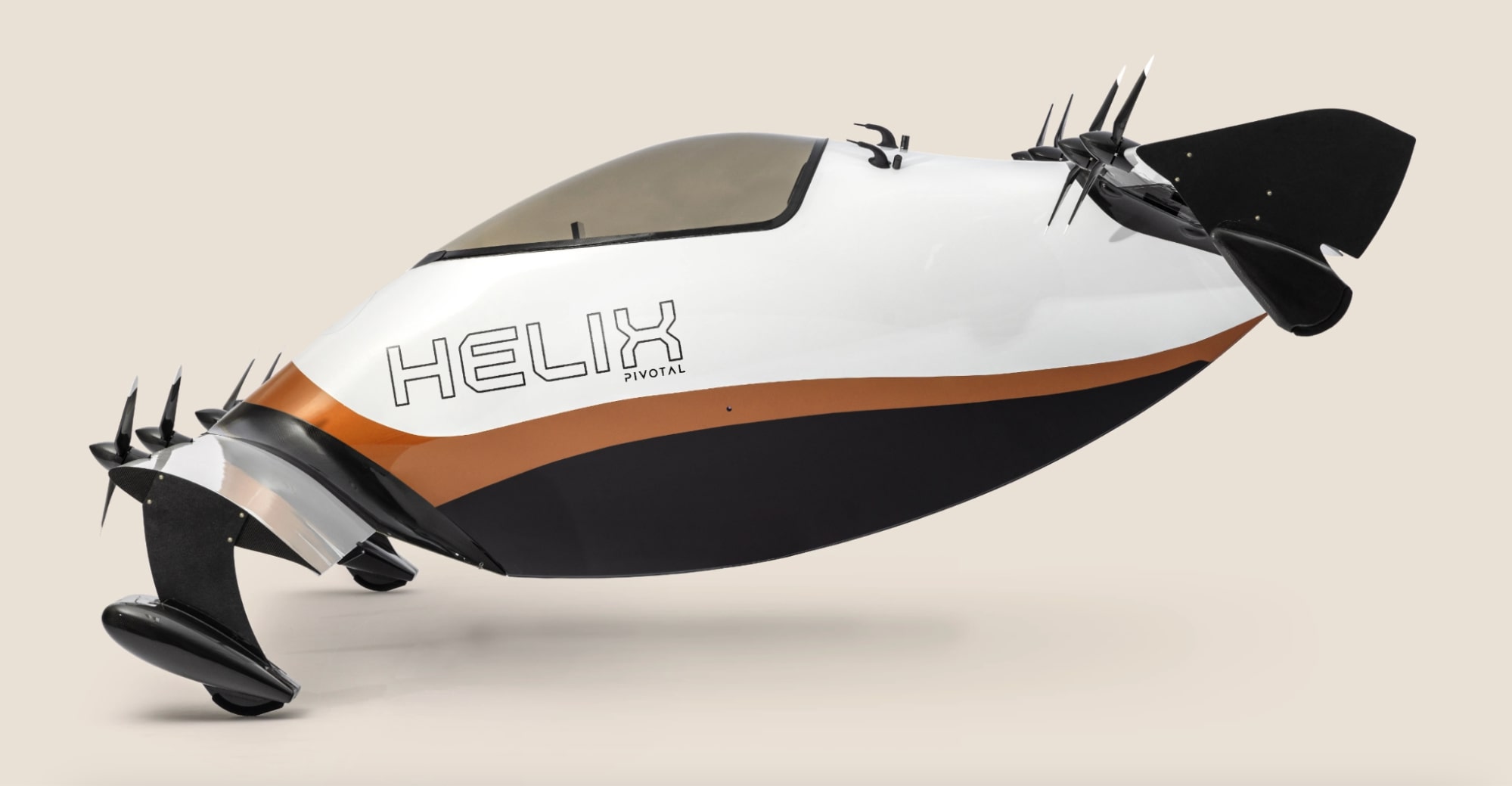
This model is powered by electric batteries, which you can charge up pretty quickly. Also, it is to be noted that The Helix isn't the fastest flying car out there, but it gets the job done.
It can cruise along at about 63 miles per hour and go for more than 20 miles on a single charge. Plus, it's pretty quiet when it's up in the air.
Terrafugia TF-X
Specifications:
- Fuel Engine: 300 HP
- Electric motor: 600 HP
- Flight range: 805 km (500 mi)
- Max speed: 322 km/h (200mph)
- Max altitude: 11,000 feet
Terrafugia TF-X is one of the cheapest, 4-passenger flying cars. With a price of $300,000, Terrafugia TF-X is a hybrid-electric and all-electric vertical takeoff and landing (VTOL) flying car that meets the demand for futuristic transportation solutions.
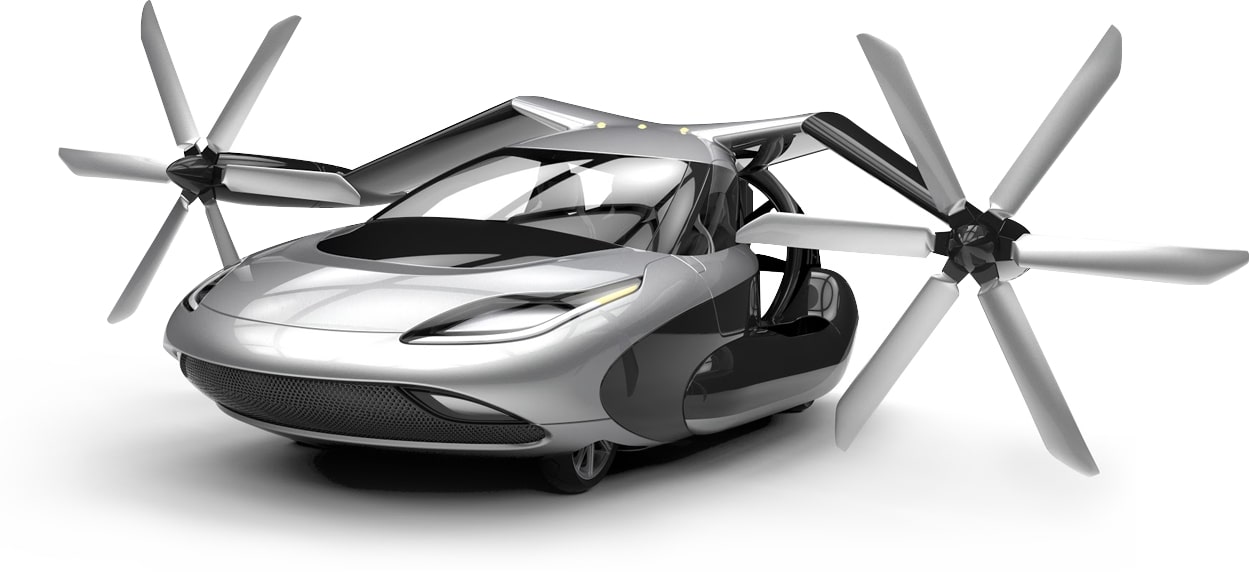
TF-X initially used petroleum engines, but later transitioned to hybrid-electric power. Plans exist to switch to 100% battery power once battery density improves.
With a cruise speed of 200 mph and a range of 500 miles, TF-X requires a 100-foot diameter clearance for vertical takeoff and landing. Even though this model seems very promising given all its features and price, its launch date has not been officially announced yet.
Samson Switchblade
Specifications:
- Number of seats: 2
- Payload weight: 575 lb (260 kg)
- Fuel capacity: 36 gal (125 L)
- Maximum speed (air): 200 mph (320 km/h, 170 km)
- Maximum speed (ground): 100 mph (161 km/h)
- Range: 350 mi (560 km, 300 nmi)
Samson's Switchblade is also one of the cheapest flying cars in 2024. The model has gotten over 2,300 bookings worldwide, with a price starting at $170,000. This model was publicly introduced in 2009 at AirVenture in mock-up form but isn’t available to the public yet.
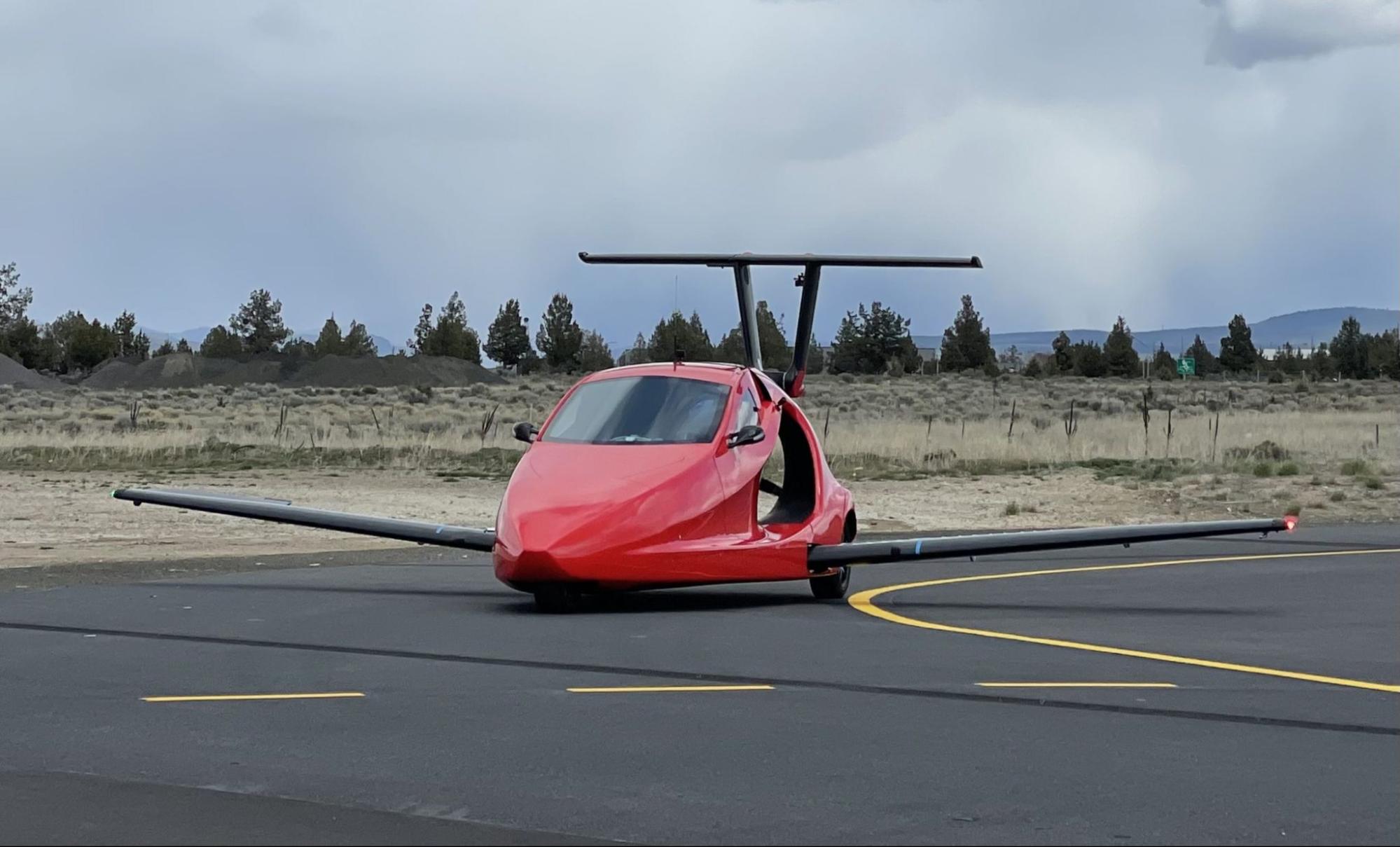
Switchblade has several great features that will surely grab your attention. For example, on the road, it can go over 125 mph. In the air, it flies at 200 mph and up to 13,000 ft high (around 4 kilometers).
It uses regular gas and can go 500 miles on a full tank. Samson Switchblade takes about three minutes to switch from car to plane. With this flying car, you can save 65% of your travel time and focus on things that matter most to you.
Doroni H1
Specifications:
- Cruise speed: 100 mph (161 km/h)
- Max speed: 140 mph (225 km/h)
- Range: 60 miles (97 km)
- Flight Time: 40 minutes
- Maximum payload: 500 lb (227 kg)
How much is the cheapest flying car, you may wonder? Priced only at $150,000, the Doroni H1 is considered one of the cheapest flying cars in 2024. The design of this flying car prioritizes passenger safety and simplicity.
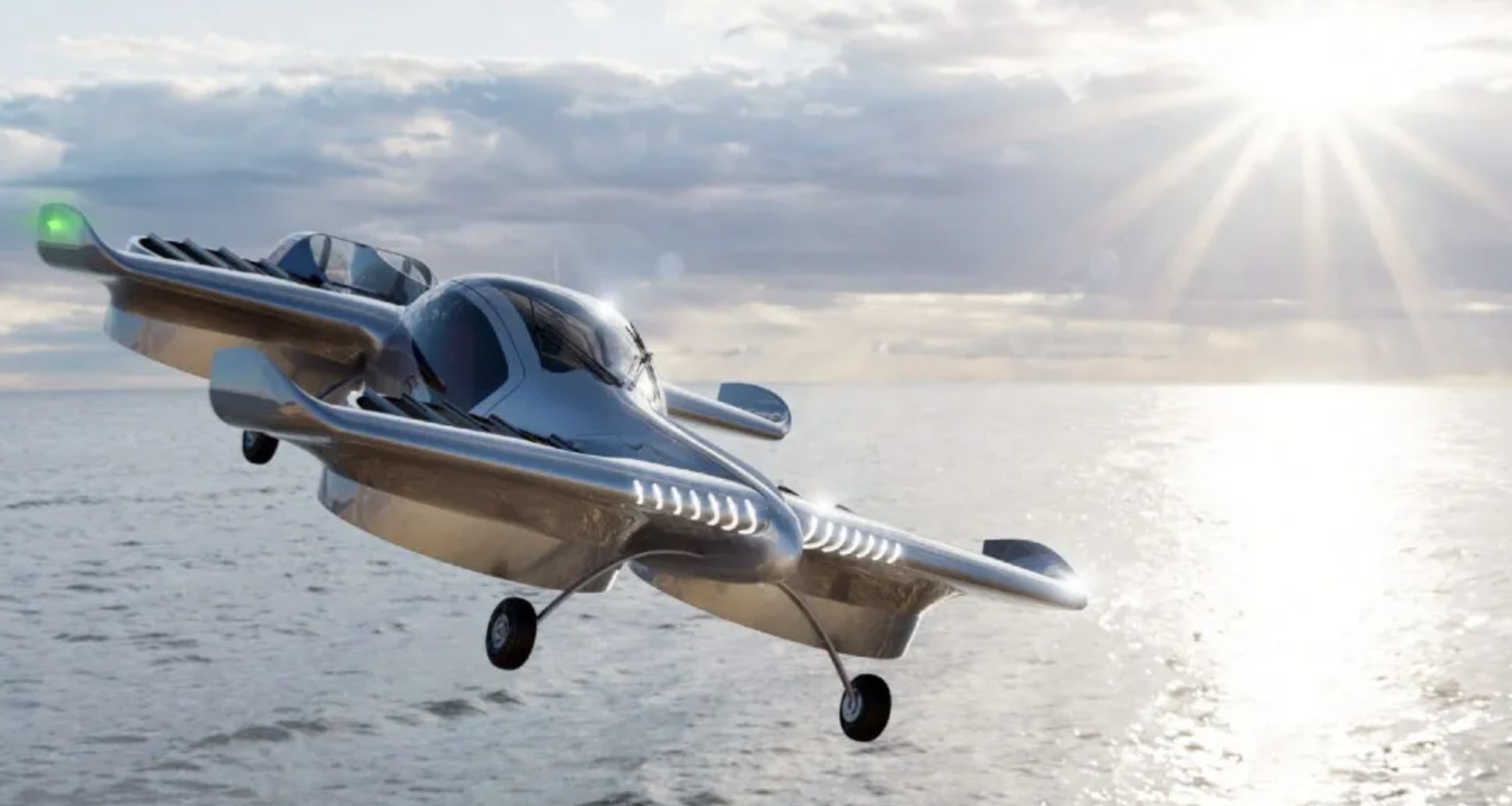
This 2-passenger flying vehicle has the feature of an autonomous flight which makes navigating this vehicle easier. You can relax in your seat and enjoy the city view while the autopilot safely navigates you to your destination.
With lithium-ion batteries and carbon fiber composite construction, the first shipments of this model are expected in 2024. This flying car represents just the first step for the company. They have ambitious plans to manufacture larger and more sophisticated models in the future.
Alef Model A
Specifications:
- Range (air): 110 m (117 km)
- Range (road): 200 m (322 km)
- Maximum payload: 200 lb (91 kg)
- Propellers: 8 propellers.
While the Alef Model A is not the cheapest flying car, it is cheaper than many other models like the Slovakian AirCar with an asking price of around $1 million.
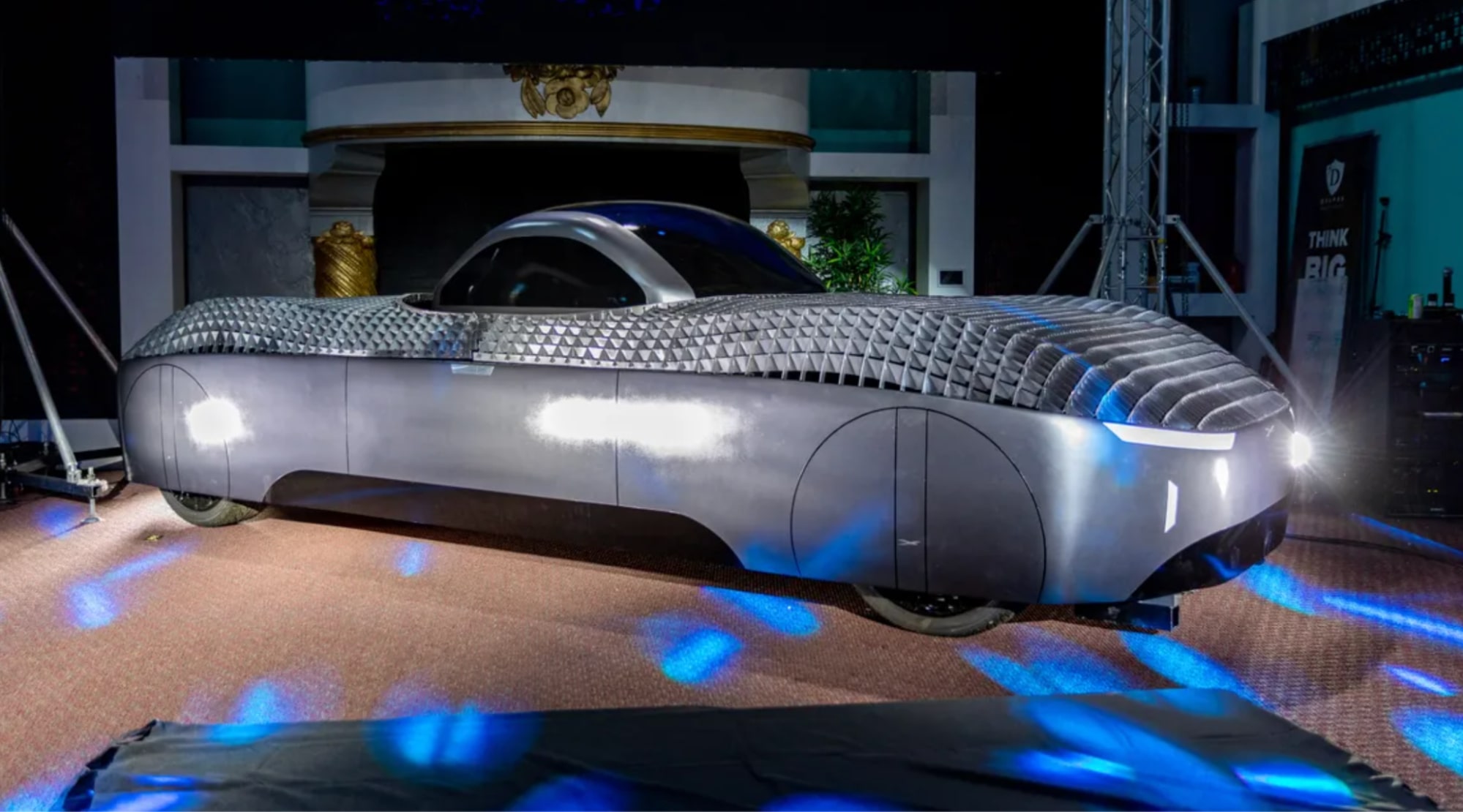
Alef Model A plans to set the price at $300,000 upon its commercial launch and is intended to be released by 2026. This model is one of the cheapest flying cars and has 2500 preorders already placed.
This model – with a road speed of 25 mph and a flight range of 110 miles – is ideal for short daily commutes. No more being stuck in traffic for hours, with this model you can bypass traffic jams and get to your destination much faster.
Factors Influencing Flying Car Prices
Several important factors, like manufacturing costs, influence flying car prices. The latter factor entails the number of seats in a flying car, the propulsion system, and other advanced technologies.
Compliance with aviation and automotive regulations further adds to a flying car’s expenses. Also, establishing infrastructure such as landing pads also plays a key role in these vehicles’ prices.
Other key factors influencing flying car prices are market demand, brand reputation, and customization features.
Technology and Innovation Costs
Flying cars require advanced technology for both flying and driving functionalities. These technologies' research, development, and implementation costs can significantly impact the final price.
Manufacturing Costs
Manufacturing flying cars involves meticulous engineering and specialized materials, which can be costly. Also, if production is limited, it can lead to higher costs per unit.
Infrastructure
Creating designated landing pads or airports for flying cars can influence their price as you won’t want to land your flying car in the middle of the road with moving traffic. The availability and accessibility of infrastructure can affect the market demand and production costs.
Market Demand and Competition
Market demand and competition play a significant role in determining prices. If flying cars become widely desired and there is intense competition among manufacturers, flying car prices may decrease due to competitive pressures.
Brand and Reputation
It is no secret that established brands with a reputation for quality and reliability may command higher flying car prices for their aircars compared to newer or lesser-known manufacturers.
Regulatory Compliance
Compliance with aviation and automotive regulations further increases the price of flying cars, as the cost of development and production also rises. Ensuring safety standards, airworthiness certifications, and meeting emissions regulations can increase expenses.
The future of affordable flying cars
As the industry progresses, there will be a gradual decline in flying car prices as technological advancements and economies of scale take effect. Emerging trends such as modular design and lightweight materials will reduce production expenses.
Also, increased competition among manufacturers is expected to further stimulate affordability. Most people cannot afford to buy $500,000-dollar flying cars, so manufacturing companies must think of ways to make flying cars accessible and affordable.
That being said, the era of astronomical prices for flying cars is not set in stone. Technological advancements and increased competition will likely lower flying car prices as they become more accessible.
Moreover, it should be noted that the modular design of flying cars will allow for ease of assembly, maintenance, and alteration, hence reducing production costs by standardizing components.
Lightweight materials such as carbon fiber composites reduce material costs and improve fuel efficiency, contributing to overall affordability by enhancing performance and extending range without cost overruns in production. Infrastructure improvements, like more landing spots and better regulations, will also help reduce costs, making flying cars more affordable for everyone.
Conclusion
Flying car prices vary widely based on factors like brand and production costs. While some models, such as Klein Vision’s AirCar, can cost up to $1 million, others are more affordable. Our handpicked list of the cheapest flying cars ranges from $150,000 to $300,000.
Compared to other high-end models, budget-friendly flying cars have a more limited travel range and lower speed and sometimes lack some of the advanced features found in top-tier models. In the future, as the industry grows and more people start using flying cars, prices are likely to drop, making flying cars accessible to more people.

